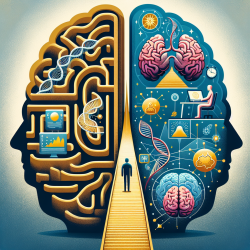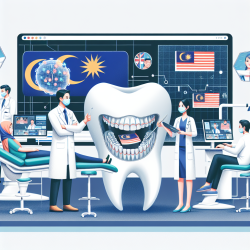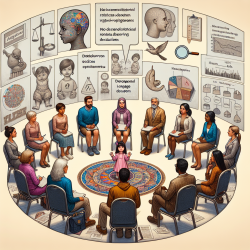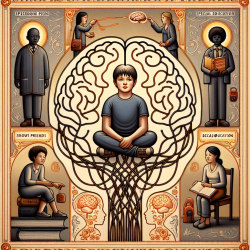Introduction
In the realm of mental health, the quest to understand the intricate relationship between psychopathology and brain structure is ongoing. The research article titled "Factor analysis of lifetime psychopathology and its brain morphometric and genetic correlates in a transdiagnostic sample" sheds light on this complex interplay. This study offers valuable insights for practitioners, especially those providing online therapy services like TinyEYE, to enhance their therapeutic approaches and encourage further research in the field.
Key Findings and Their Implications
The study identified three primary factors of lifetime psychopathology: paranoid-hallucinatory syndrome (PHS), mania (MA), and depression (DEP). These factors were cross-validated and linked to specific brain morphometric and genetic markers. Notably, PHS showed negative correlations with gray matter volume (GMV) in regions such as the hippocampus and amygdala, as well as cortical thickness (CT) in the superior temporal and angular gyri. These findings underscore the importance of a dimensional approach to understanding mental disorders, moving beyond traditional categorical diagnoses.
Applications for Practitioners
For practitioners, these insights can be transformative in several ways:
- Enhanced Diagnostic Precision: By adopting a transdiagnostic approach, therapists can better identify and address the nuanced symptomatology present in various disorders, leading to more personalized treatment plans.
- Informed Therapeutic Interventions: Understanding the brain morphometric correlates of specific psychopathological factors allows therapists to tailor interventions that target these areas, potentially improving treatment outcomes.
- Encouraging Further Research: The study highlights the need for ongoing research into the genetic underpinnings of mental disorders. Practitioners can contribute to this body of knowledge by engaging in collaborative research efforts or integrating genetic insights into their practice.
Encouraging Further Exploration
While this study provides a foundational understanding, it also opens the door for further exploration. Practitioners are encouraged to delve deeper into the genetic aspects of psychopathology and consider how these insights can be integrated into therapeutic practices. By doing so, they can contribute to a more comprehensive understanding of mental health and enhance the efficacy of online therapy services like those offered by TinyEYE.
Conclusion
The intersection of psychopathology, brain science, and genetics is a promising frontier in mental health research. By embracing a dimensional approach and leveraging the insights from studies like this one, practitioners can enhance their therapeutic skills and contribute to a more nuanced understanding of mental disorders. As we continue to unravel the complexities of the human mind, the potential for improved mental health outcomes grows ever brighter.
To read the original research paper, please follow this link: Factor analysis of lifetime psychopathology and its brain morphometric and genetic correlates in a transdiagnostic sample.










